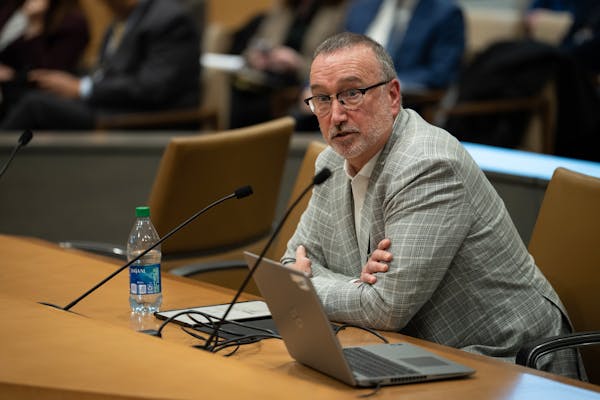The CEO of Duluth-based Essentia Health saw his total pay increase to just over $3 million in 2022, while the chief executive at St. Cloud-based CentraCare received slightly less at about $1.46 million.
The figures, which the health systems released with tax filings in May, round out the 2022 compensation numbers across Minnesota's 12 largest health care nonprofits. The Star Tribune in February reported on trends across 10 of the organizations, which generally provided higher pay driven by more bonus/incentive compensation.
At Essentia, David Herman's pay increased nearly 7% to about $3.07 million. This made him one of four CEOs who broke the $3 million mark in 2022 — the first time so many health care chief executives earned so much in more than 25 years of Star Tribune annual reports on nonprofit executive pay.
Essentia Health generated operating income every year between 2018 and 2022 when other Minnesota health systems posted some annual losses, said Al Hodnik, chair of the nonprofit's board of directors. Meanwhile, Herman led Essentia through operational stresses with COVID-19, Hodnik said, while also building a massive new hospital and implementing higher-level trauma services.
"From our perspective, when you roll that all together ... it certainly merited the increase that we provided him," Hodnik said.
Pay for Kenneth Holmen, the CentraCare chief executive, was down by less than 1%.
The decrease was driven by a reduction in bonus/incentive pay. Holmen received more pay in this category the previous year through a retention award plus compensation that recognized efforts by all employees during the second year of the COVID-19 pandemic.
CentraCare also reported operating income every year between 2018 and 2022, bolstering plans to build a new medical school campus in St. Cloud with the University of Minnesota.
"CentraCare salaries and benefits are market-based, which means our pay will be near the pay of others doing a similar job in a similar organization," the health system said in a statement. "We also target pay to be at the midpoint of the range — also known as the 50th percentile."
The Star Tribune annually compiles CEO compensation data, including salary, bonuses and incentives and other types of pay, as listed on forms filed with the IRS. The news organization also calculates operating income figures from audited financial statements that nonprofits either file with bondholders or make available to the Star Tribune.
Mayo Clinic, Fairview Health Services and HealthPartners also paid their CEOs more than $3 million in 2022, according to Star Tribune data. In financial terms, all three of these health systems are larger than Essentia Health.
Hodnik pointed out that Herman has been CEO at Essentia for nearly 10 years. The board has valued this stability, he said, particularly as competition for executives to run large nonprofit health systems has become intense.
"The marketplace for talent right now," he said, "is exceptionally hot."
Based on annual revenue, Essentia Health and CentraCare ranked Nos. 8 and 9, respectively, on the Star Tribune's annual list of the largest nonprofits in Minnesota. The health systems are major forces in regional economies, with Essentia employing more than 15,000 people across 14 hospitals and 78 clinics. CentraCare employs more than 11,000 people across 10 hospitals and more than 30 clinics
Hodnik said the health system hires an external consultant and uses industry benchmarks from peer organizations when setting CEO pay. The consultant's report showed the health system in 2022 had some of the highest marks in the country for health care quality, he said, although Essentia Health said it could not release this data.
Compensation watchdogs have urged nonprofits to be more transparent about the quality measures they use when awarding CEO pay.
With the financial stress of the COVID-19 pandemic, plus industry-wide challenges with recruitment and retention, a number of health care nonprofits in recent years have opted to award bonus/incentive pay even when organizations haven't had the level of financial performance that's more typically been required for these payments.
At Essentia Health, the board provided incentive pay to Herman in 2022, even as operating income declined compared with the previous year, because earnings across the health system remained high enough to clear a predetermined threshold, Hodnik said. After clearing this financial "gate," as some consultants call it, the incentive plan at Essentia Health pays out at different levels after factoring a variety of non-financial performance measures.
"Our compensation design, broadly, is a pay-for-performance plan — so it's not sort of a giveaway, or a gimme," Hodnik said. "There has to be financial performance at a minimum level."

Bushel Boy, Minnesota's local tomato grower, sold
After 60 years, federal cuts shutting down Job Corps center in St. Paul

In a first, Minnesota doctors walk their own picket line, then hustle to see patients
It's harder to find a job this year, especially a corporate position

